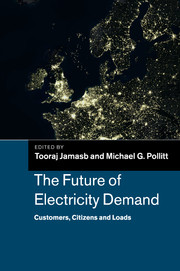Foreword
Published online by Cambridge University Press: 05 March 2014
Summary
Until the oil shocks of the 1970s, electricity demand growth was rapid, but then slowed dramatically in developed economies, with subsequent excess capacity. Falling fuel and electricity prices from 1986 then directed attention away from the demand side. That situation has now changed. Ambitious environmental targets, rising electricity prices, rapid technical progress, combined with cheaper and better information and communication technologies, will have a dramatic impact on the electricity sector of the twenty-first century. ‘Smart’ technologies and demand-side management will be key features of this new electricity system. Social and behavioural changes are also likely to play an important role. Decarbonizing the economy means increasing the share of electricity, which will power cars and heat pumps, reducing the importance of oil and gas but creating new and more concentrated demand patterns. New intermittent low carbon generation and new heavy demand uses will require more flexible and responsive demand, which will require major changes to the design and operation of the electricity system, further increasing its complexity.
The UK led the world in electricity reforms starting in 1990, providing a valuable case study for other countries to learn how, and to what extent, the management of electricity demand can – or cannot – be successfully combined into a competitive energy market environment. The next wave of required reforms offers new opportunities for learning, and although this book concentrates on the UK, it draws numerous insights from, and for, other countries.
- Type
- Chapter
- Information
- The Future of Electricity DemandCustomers, Citizens and Loads, pp. xxv - xxviPublisher: Cambridge University PressPrint publication year: 2011



